Art & Exhibitions
Dalí Headlines a New Show Exploring Artistic Takes on the Passion of Christ
"Ecce Homo: Behold the Man" is on view at the Bible Museum runs though May.
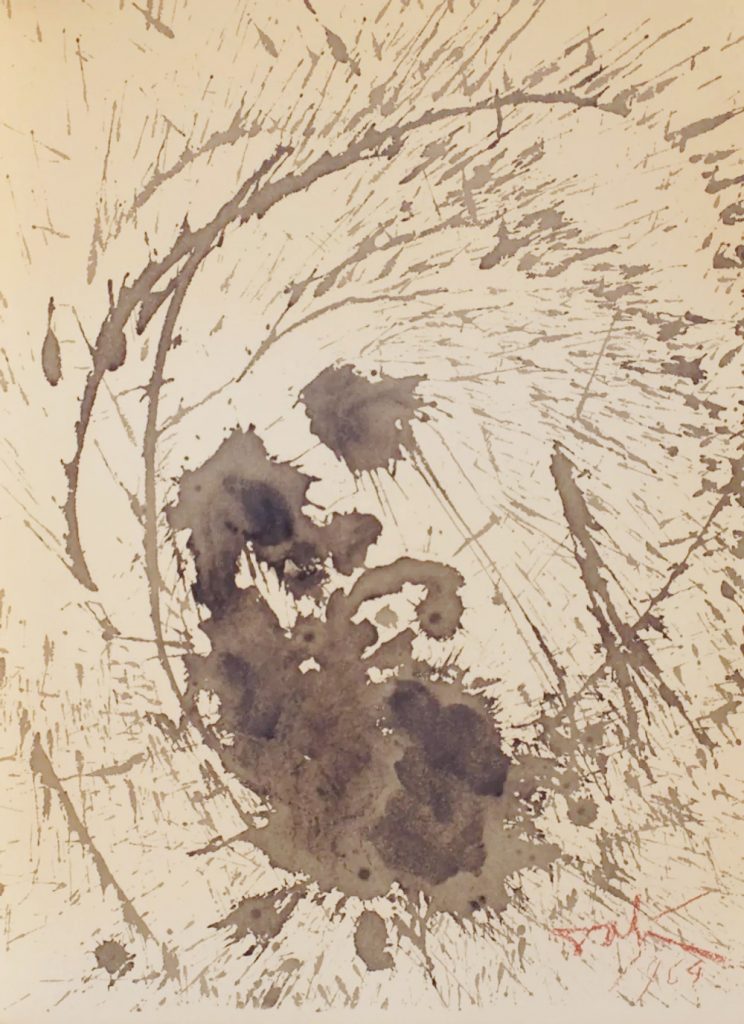
“Ecce Homo: Behold the Man,” an expansive new exhibition at the Museum of the Bible in Washington, D.C., explores how artists have interpreted the Passion of Christ over the past five centuries.
The Passion, derived from the Latin word patior meaning “to suffer, bear, endure,” refers to Christ’s final days as described in the New Testament. Celebrated during Easter, it includes his entry into Jerusalem, the Last Supper with his disciples, his betrayal by Judas, his trial before the Roman adjudicator Pontius Pilate, and his crucifixion. A popular theme in Christian religious art, the Passion symbolizes the belief that the Son of God sacrificed himself to absolve the sins of all mankind.
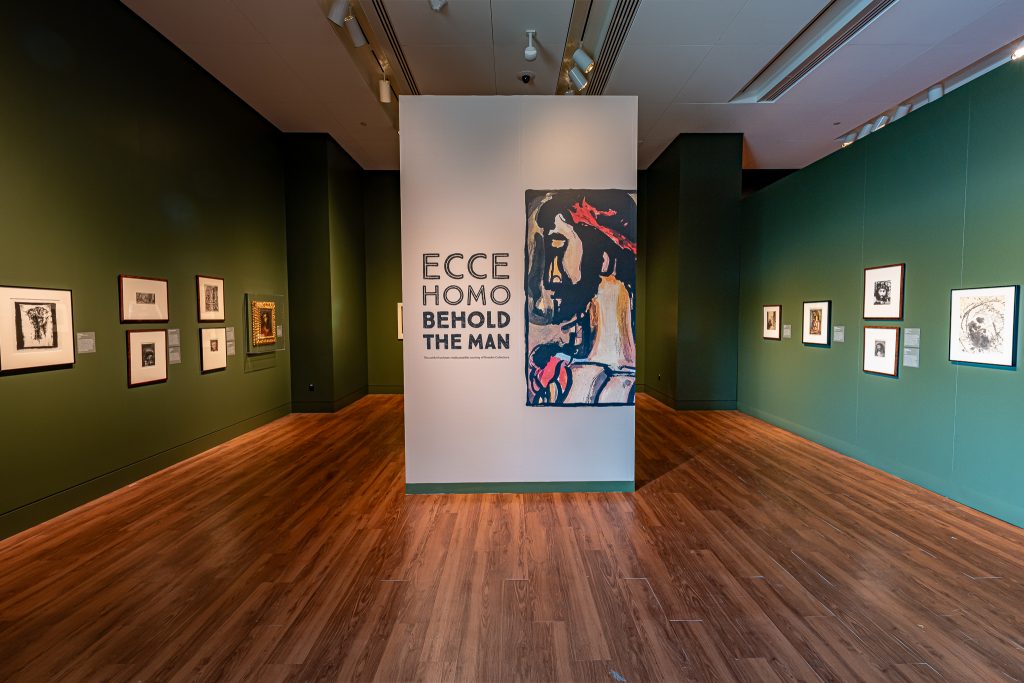
Installation view of “Ecce Homo: Behold the Man” at Museum of the Bible. Photo courtesy of the Museum of the Bible.
The title of the exhibition borrows from the phrase that Pontius Pilate is said to have uttered upon presenting Jesus, bound and lashed, to a Roman crowd. “Then came Jesus forth, wearing the crown of thorns, and the purple robe,” reads the Bible passage John 19:5. “And Pilate saith unto them, Behold the man!”
To trace how representations of the Passion have changed significantly throughout art history, the show encompasses the figurative woodcuts of the Medieval era through the lifelike works by artists of the 18th and 19th centuries. A bulk of the exhibition is given over to art of the 20th century, when the Passion was abstracted and appropriated to comment on themes beyond the religious.
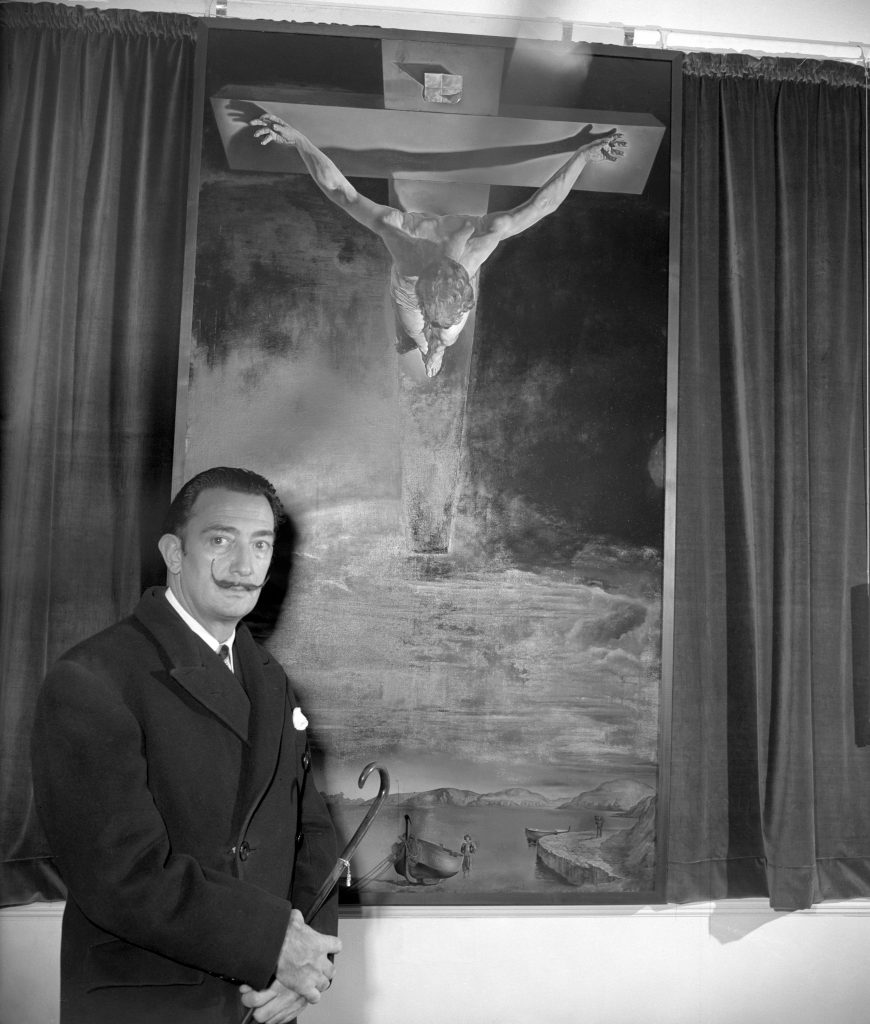
Salvador Dalí with his painting, Christ of Saint John of the Cross. Photo: PA Images via Getty Images.
Here, Dalí’s Ecce Homo (1969) takes the spotlight. The watercolor drawing was created with the technique “bulletism,” involving firing an antique gun loaded with ink capsules at a blank sheet of paper. The splatters, in this case, formed the face of Christ’s thorn-crowned face.
Drawn to the Catholic traditions of his native Spain, particularly in the postwar period, Dalí’s interest in the Passion, a topic he tackled more than once, was a response to his anxieties about the “atomic age.” As he wrote in his 1942 autobiography: “I believe, above all, in the real and unfathomable force of the philosophic Catholicism of France and in that of the militant Catholicism of Spain.”
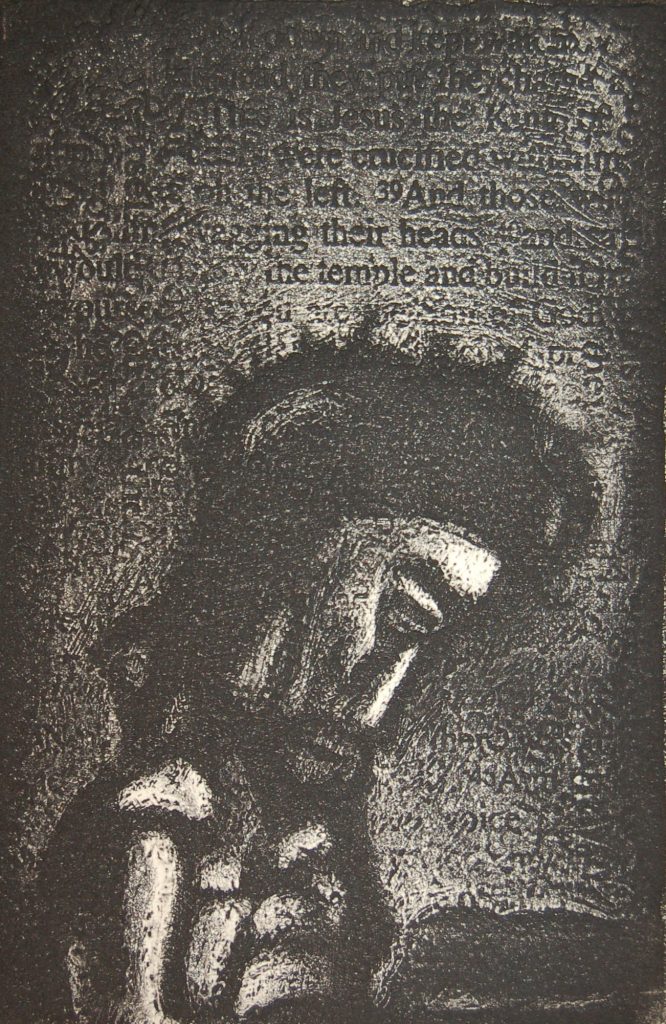
Tyrus Clutter, Jesus Reviled (2006). Photo courtesy of the Museum of the Bible.
Other contemporary interpretations of the Passion include Hubertus Giebe’s sad-faced Christ, rendered in the style of German Expressionism; Romanian artist Ioana Datcu’s collaged portrait of Jesus; and Ralph Hall’s vivid painting that captures the lashes that Jesus suffered before his crucifixion.
See more images from the exhibition below.
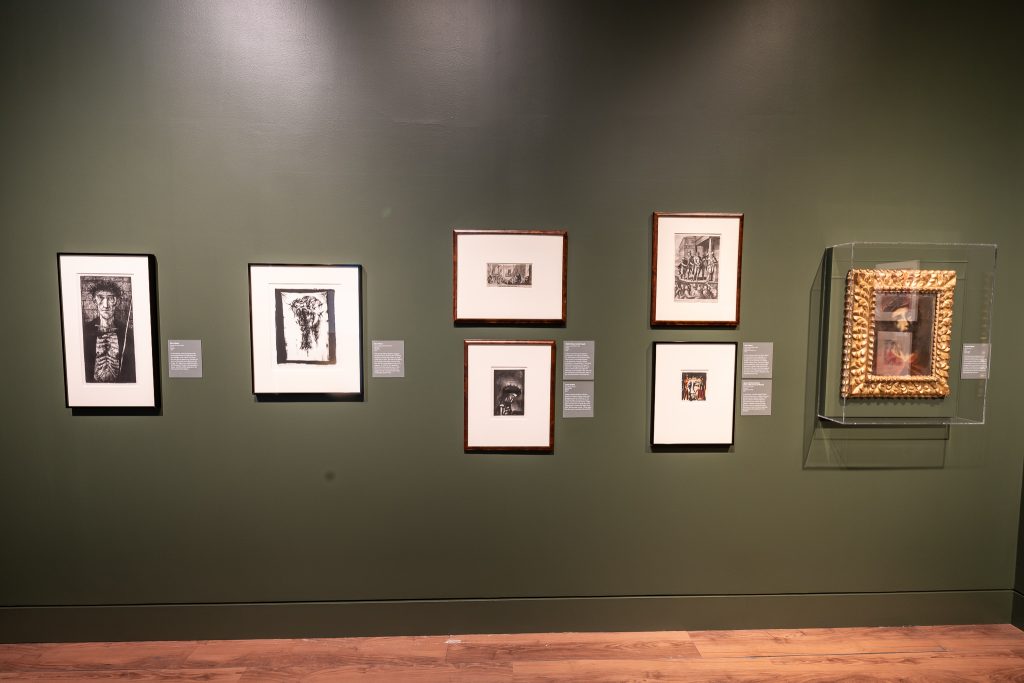
Installation view of “Ecce Homo: Behold the Man” at Museum of the Bible. Photo courtesy of the Museum of the Bible.
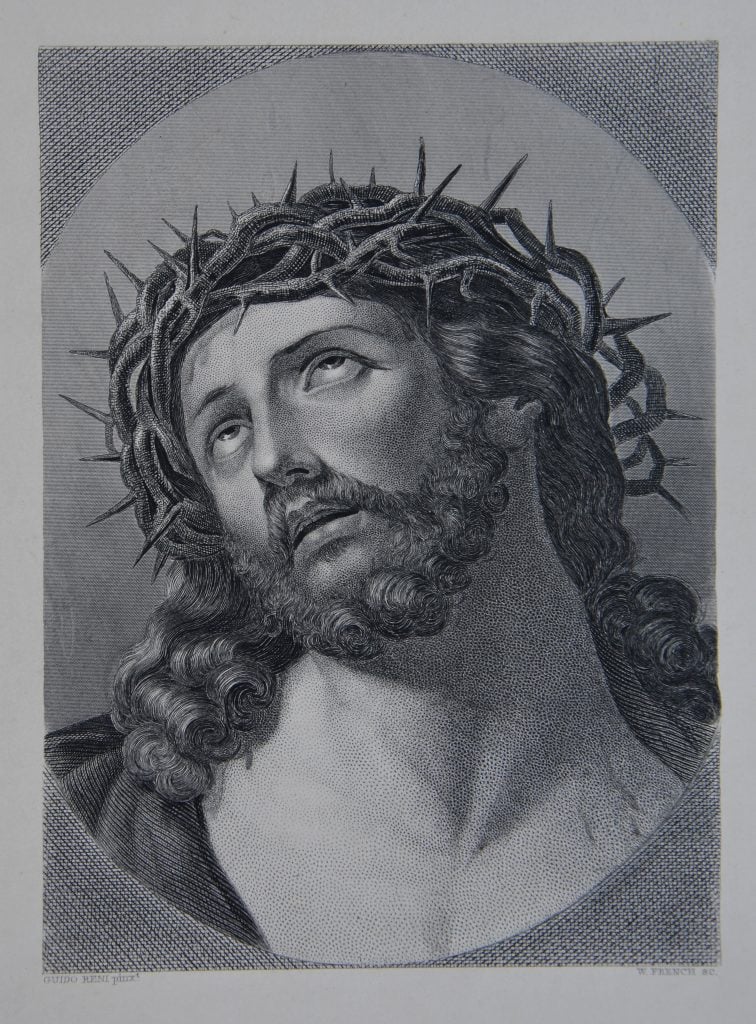
W. French, Ecce Homo (after Guido Reni) (ca. 17th century). Photo courtesy of the Museum of the Bible.
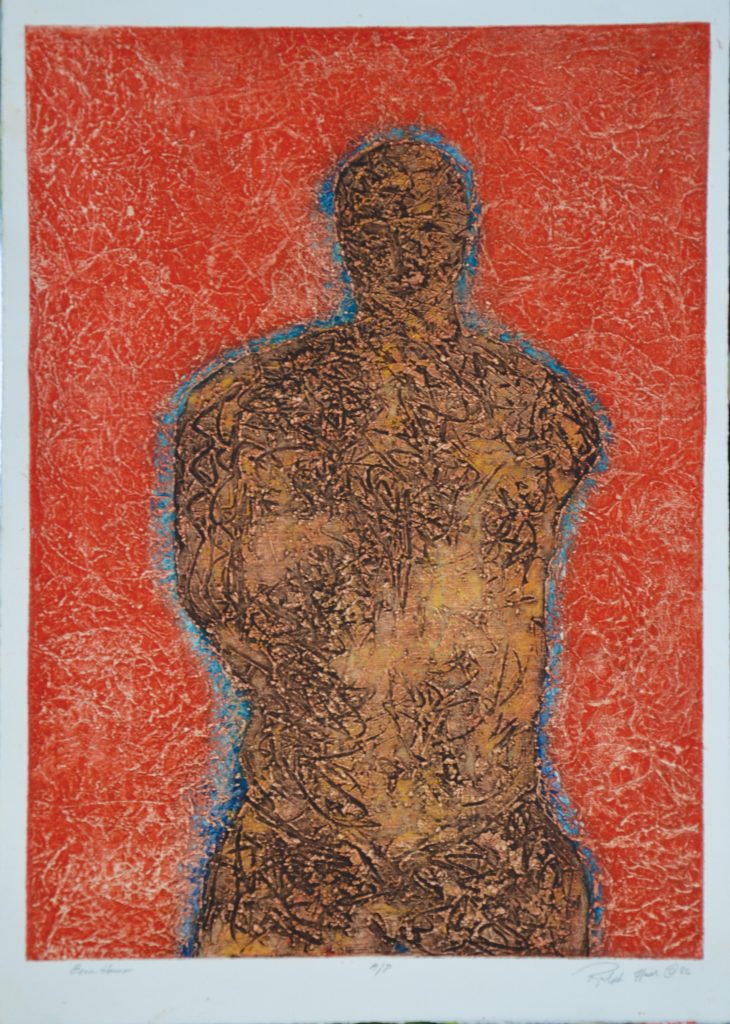
Ralph Hall, Ecce Homo (1986). Photo courtesy of the Museum of the Bible.
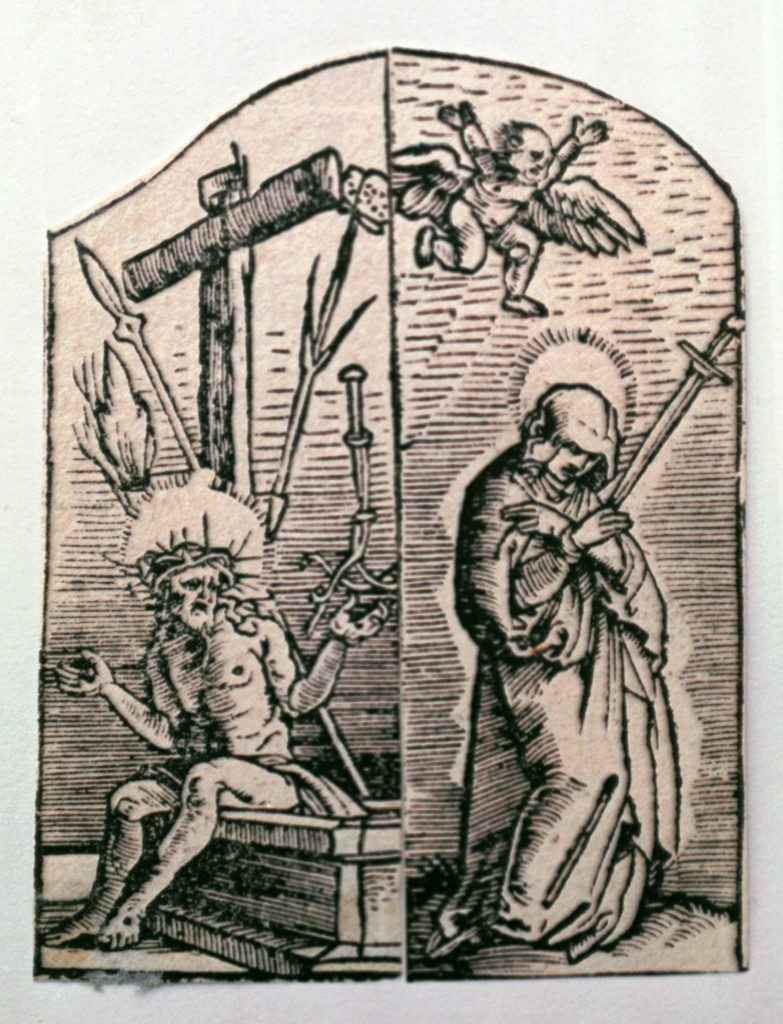
Unknown artist, Man of Sorrows and Mater Dolorosa (1524). Photo courtesy of the Museum of the Bible.
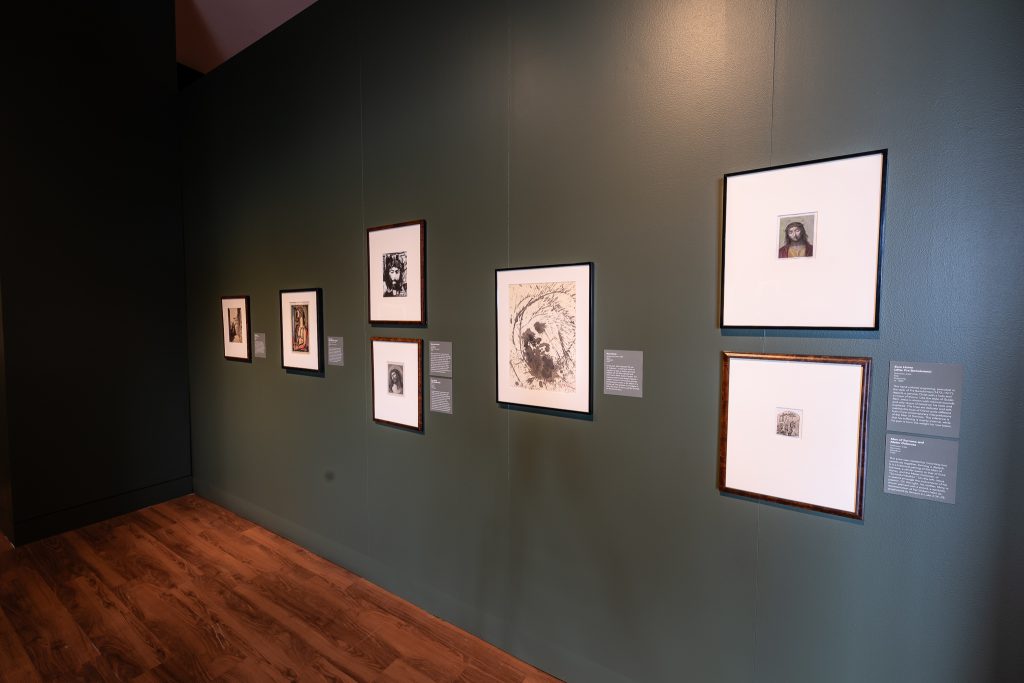
Installation view of “Ecce Homo: Behold the Man” at Museum of the Bible. Photo courtesy of the Museum of the Bible.
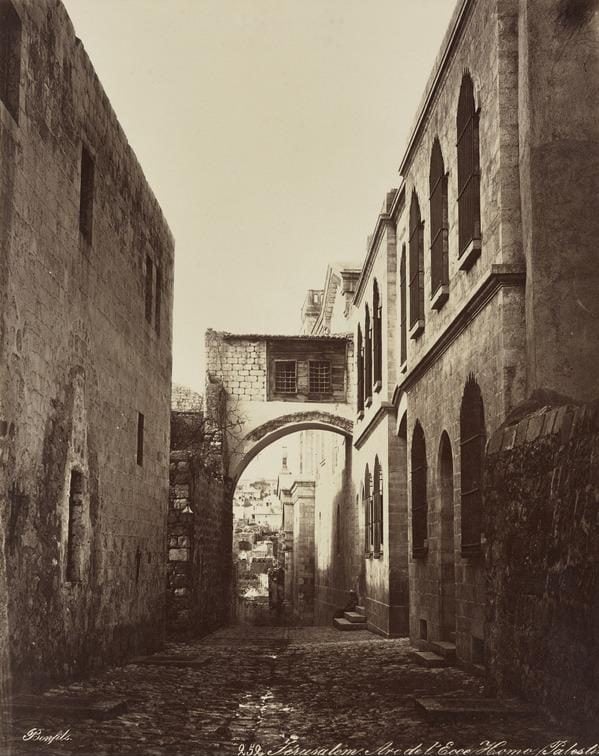
Félix Bonfils, Ecce Homo (ca. 1880s). Photo courtesy of the Museum of the Bible.
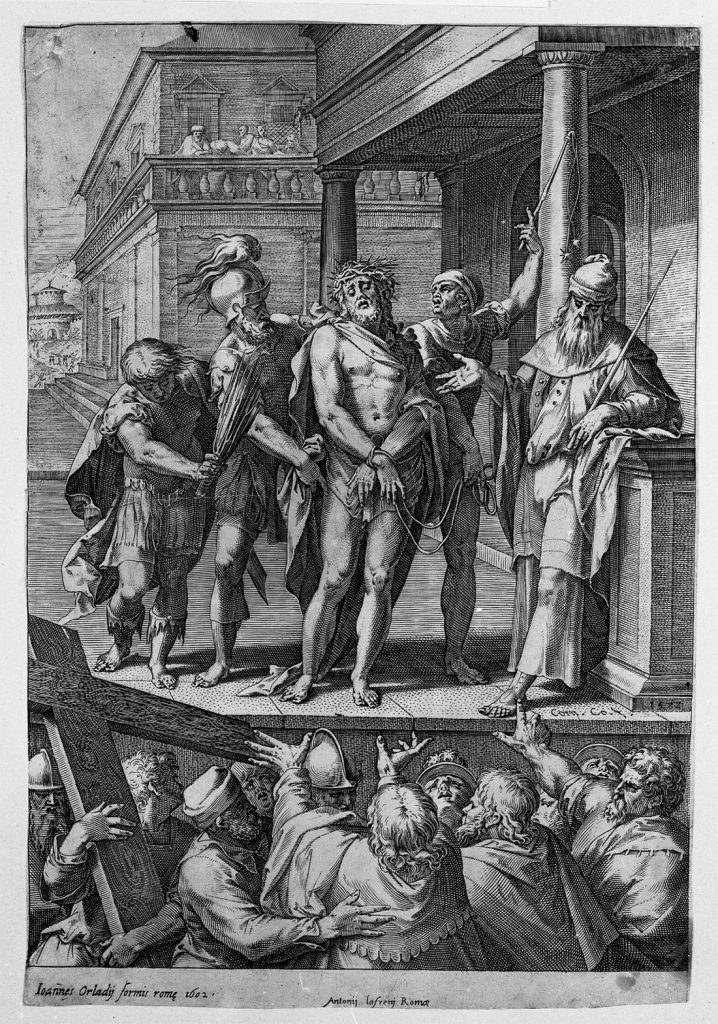
Cornelis Cort, Ecce Homo (1602). Photo courtesy of the Museum of the Bible.
“Ecce Homo: Behold the Man” is on view at the Museum of the Bible, 400 4th St SW, Washington, D.C. through May 15.





